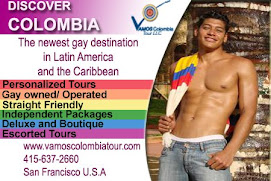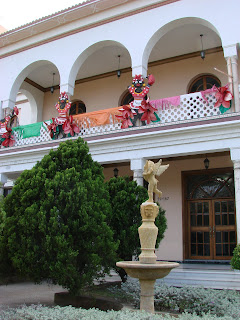

The final day (Tuesday) of Mardi Gras is known for the funeral procession of "Joselito Carnaval" the representation of the Carnaval which is deceased (since it is the last day), and is then buried. Of course it is a parade with dancing nonetheless. This one was right in the street and no fence so everyone can go right up the participants to dance, take pictures, or cry with the many "widows" of Joselito dressed in black (both beauty queens and drag queens) and parading.
 While this Carnaval does not have the topless women and the over the top costumes that the Rio Carnaval is known for, it clearly is a city- and country-wide event with many strong traditions that remain very much alive. For the non-Colombian visitor, it is chance to see live Cumbia, Mapale and other traditional dancing on a large scale, and hear live music of all kinds which is rare to find (live) outside of Colombia and never on this large of a scale. This is also a country of beauty which is very much on display in both the women and the men. Interestingly, it is also a chance to see a somewhat fractured country come together for a large community-wide event, and of course a chance for a big party which is non-stop, all day and all night for 5 days in a row.
While this Carnaval does not have the topless women and the over the top costumes that the Rio Carnaval is known for, it clearly is a city- and country-wide event with many strong traditions that remain very much alive. For the non-Colombian visitor, it is chance to see live Cumbia, Mapale and other traditional dancing on a large scale, and hear live music of all kinds which is rare to find (live) outside of Colombia and never on this large of a scale. This is also a country of beauty which is very much on display in both the women and the men. Interestingly, it is also a chance to see a somewhat fractured country come together for a large community-wide event, and of course a chance for a big party which is non-stop, all day and all night for 5 days in a row. The videos will give an idea of the non-stop dancing all the way down the many blocks of the parade. Check out the Mapale and the Afro-Caribbean dancing, and you will get an idea of where Shakira learned her moves! (One video here, the second in the next entry)
The partying, by the way, is famous here for the use of foam and fine white corn powder, both of which are sprayed on everyone when they are drinking, or just watching the parades. We managed to avoid it until the last night, when we found a group of friends of a friend, who quickly became our friends too, found a hoping bar with tables on the street, let go, had fun with everyone else!











































